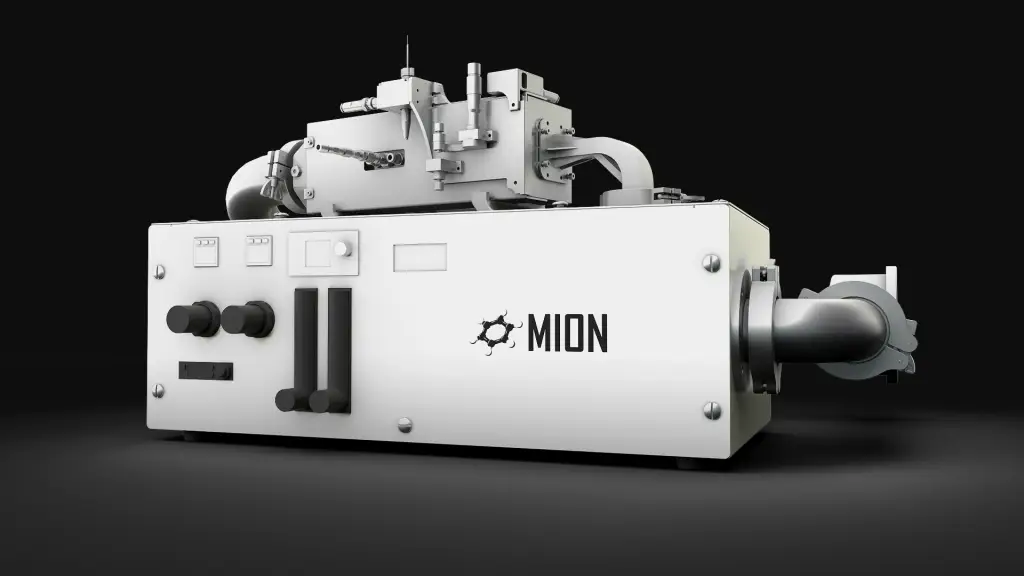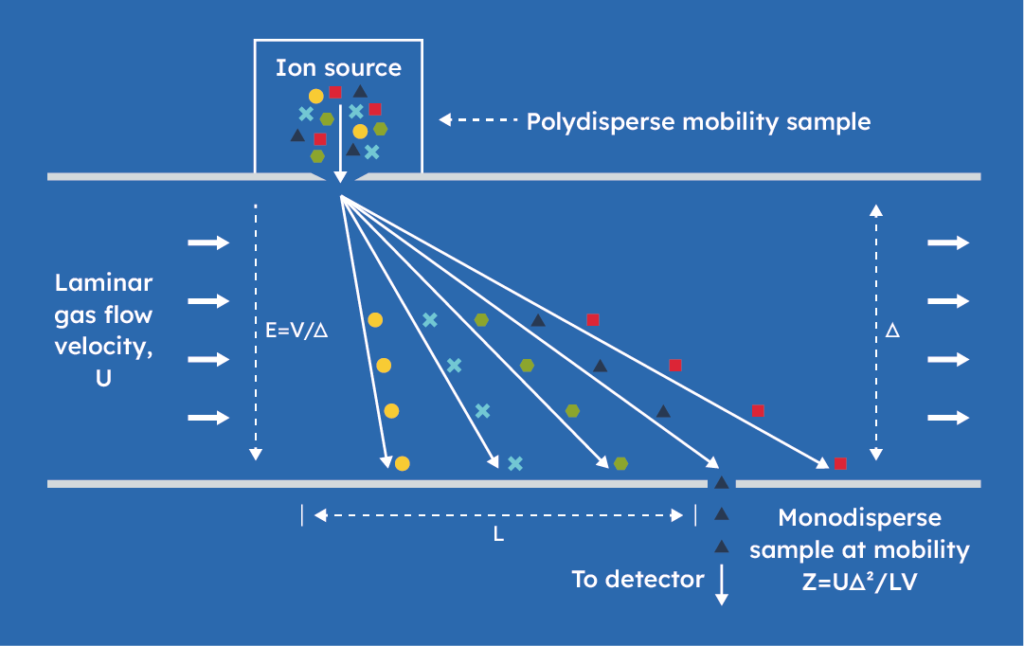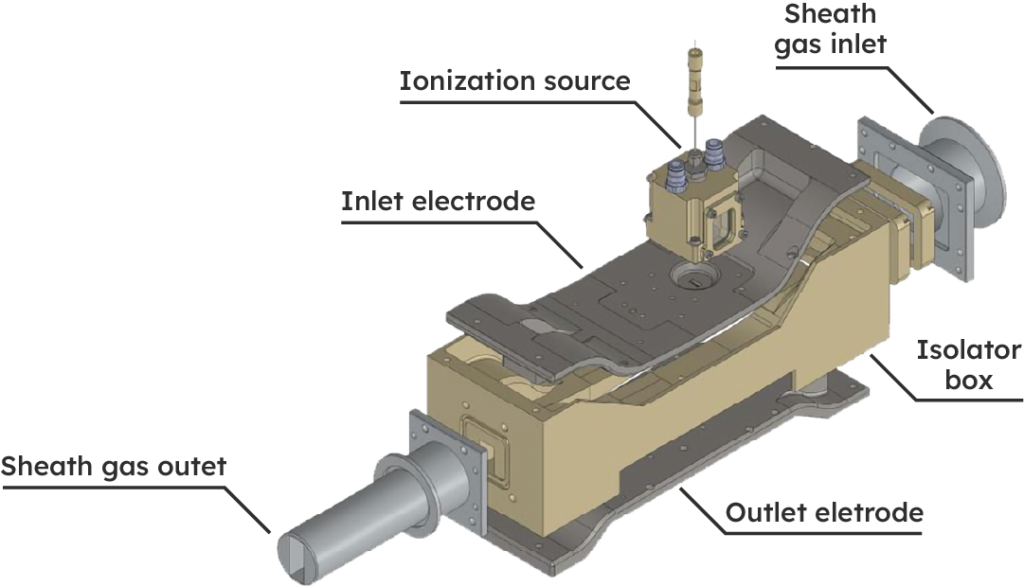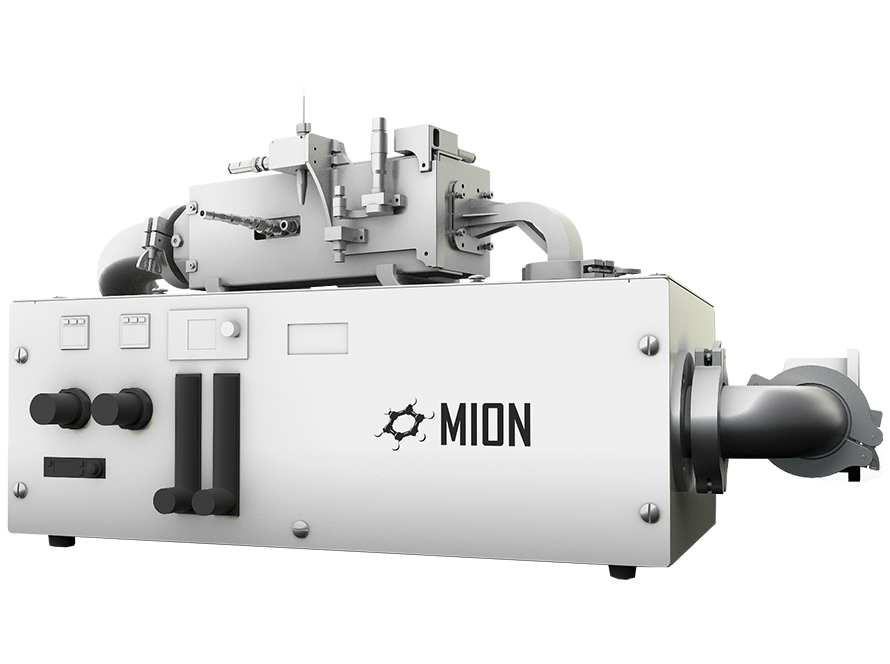Planar Differential Mobility Analyzer
Ultra high resolution and transmission for the analysis of ions and nanoparticles.

A high performance DMA for classification of 1 – 5 nm particles.
MION’s DMA P5 delivers the highest resolution and transmission available in the market even of ions and particles 1 nm in diameter, still at affordable costs.
DMA P5 is particularly well suited for high space charge or high concentration sources of nanopartciles, such as electrospray, laser ablation, flames, etc.

In the P5 parallel plate Differential Mobility Analyzer (DMA), sampled charged molecules or particles are simultaneously subjected to a gas flow and an electric field, such that only those with a specific mobility are transmitted into the DMA outlet.

The planar geometry permits direct access to the aerosol at the inlet and outlet. This feature results in much higher transmission than in more conventional cylindrical DMAs, particularly when using sources with high space charge (electrospray, sparks…) or rapidly evolving aerosols (flames, laser ablation, etc.), The planar geometry is also ideally suited for tandem operation with a mass spectrometer (DMA-MS).
The P5 DMA has been designed to deliver laminar flow at Reynolds numbers beyond 100,000. This supercritical feature enables the achievement of ultra-high resolving powers (exceeding 100), providing access to small molecules and clusters, poorly resolved by traditional DMAs.
Advantages
- Ultra-high resolution of up to 100*, yet an ability to cover the size range up tp 5 nm for singly charged particles
- Unbeatable transmission, >50%
- Extremely short, best-in-class, ion residence times (200 μs) avoiding the formation of physically or chemically-induced artifacts
- Fast response (<1 ms) enabling scanning in conjuction with fast scanning instruments like MS. The DMA P5 can be tailored and coupled with your MS to obtain 2D mobility-mass spectra
- Stand alone operation made easy: directly connected to PC-USB
- Operational temperature up to 160ºC
*Mario Amo-González, Sergio Pérez. Planar Differential Mobility Analyzer with a Resolving Power of 110. Analytical Chemistry 2018, 90 (11), 6735-6741

